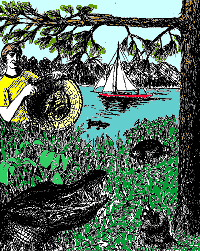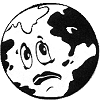
Natural Resources
of the Lake Pontchartrain Basin

Objectives:
- List numerous natural resources of the Lake Pontchartrain Basin, to understand their relative importance and to realize how a student's lifestyle affects the use of our natural resources.
- Develop an appreciation for the complex inter- relationships of many of these natural resources and how we must learn to steward them.
- Understand that almost all natural resources have both pros and cons surrounding their use.
- Broaden our perspectives by assuming another's position regarding what we consider to be a valuable natural resource.
- Generate and test hypotheses regarding the effects of specific pollutants upon the Lake Pontchartrain Basin ecosystem.
- Allow students to practice developing hypotheses from observational data.
- Demonstrate the scientific method by designing and implementing a controlled experiment.
Multiple Intelligences Learning Activities:
Verbal/Linguistic: - Adopt and verbally defend a particular viewpoint concerning an aspect of our natural resource use dilemma.
Interpersonal: - Choose opposing sides to defend in a current, relevant, natural resource issue and learn how resolution between conflicting interests is achieved.
Verbal/Linguistic: - Formulate and articulate testable hypotheses based upon your own observational data.
Mathematical/Logical: - Test hypotheses using valid scientific methodology.
"Nature seems to be running a fever. We are the flu. Our goal is not so much to manage the planet earth as to make rselves less like a pathogen and more like those helpful bacteria that dwell in our own guts."William Ruckelshaus, |

